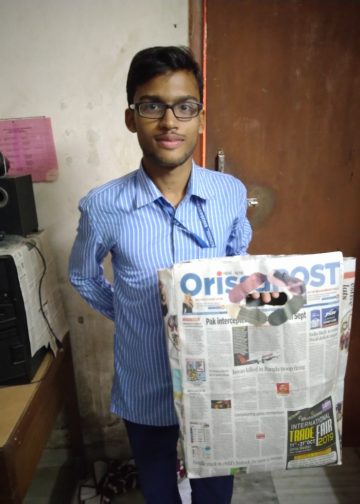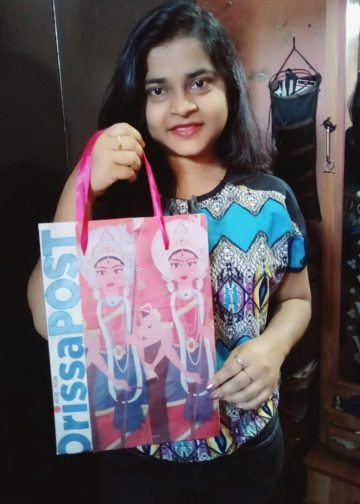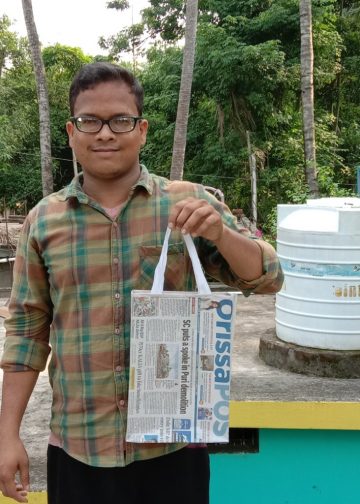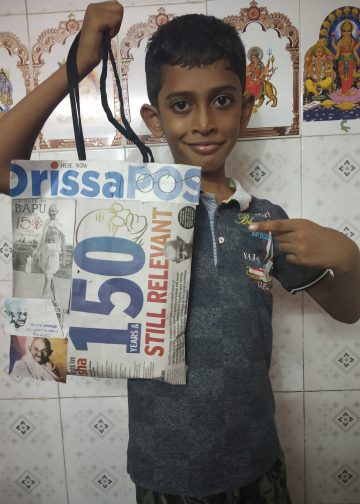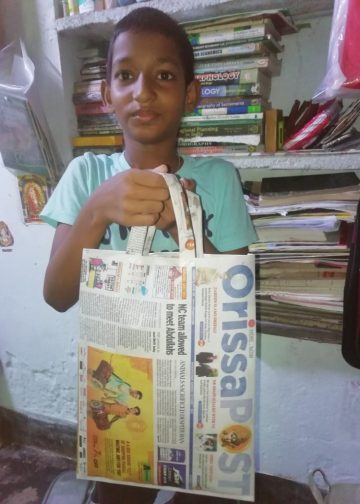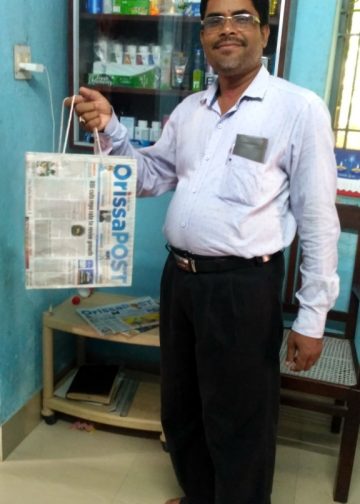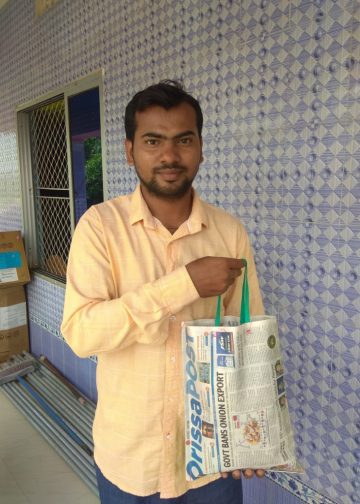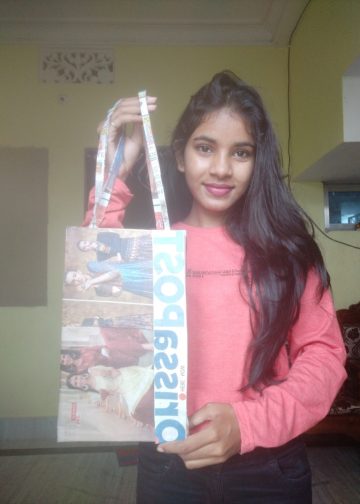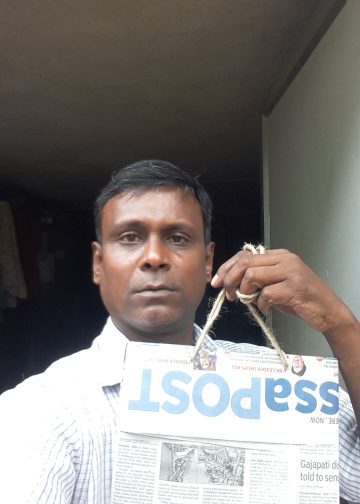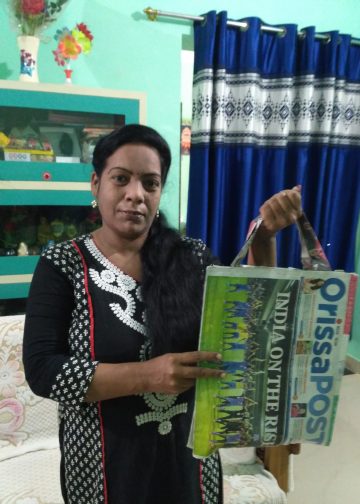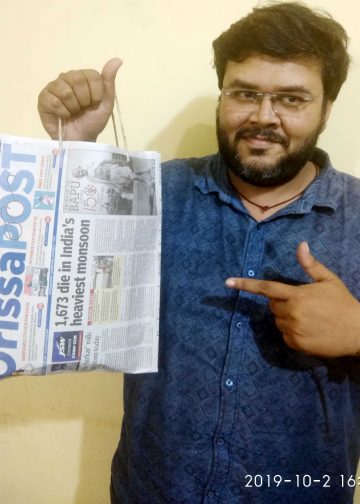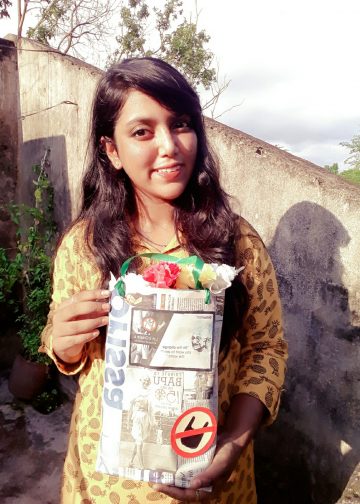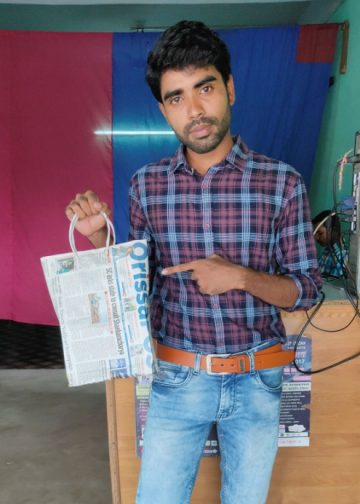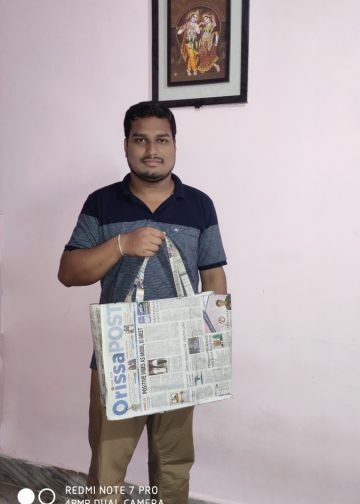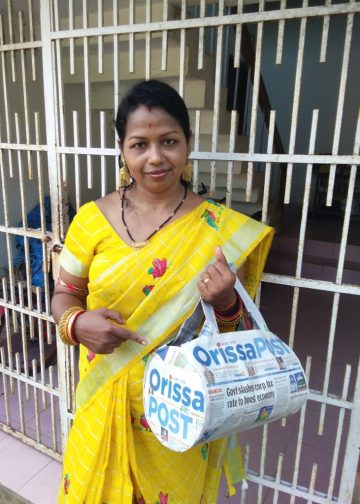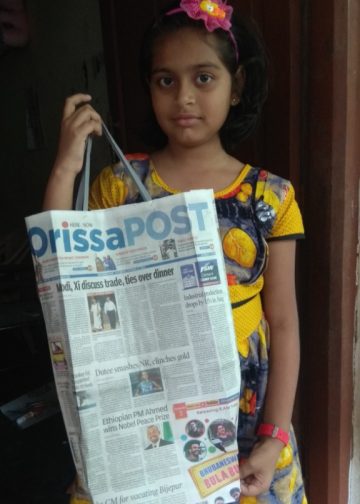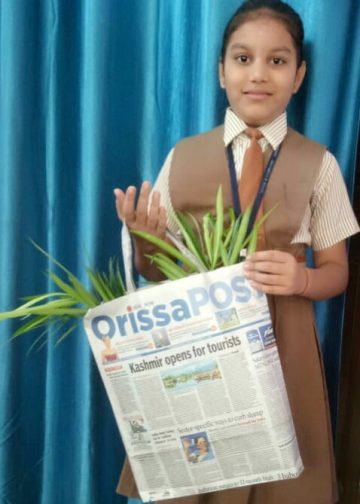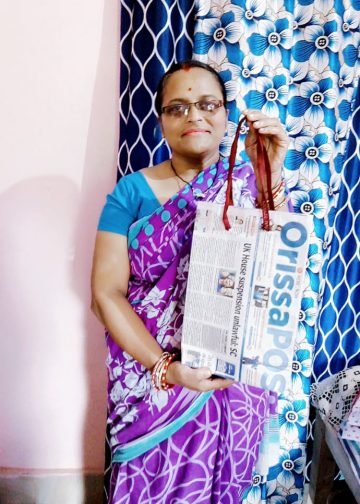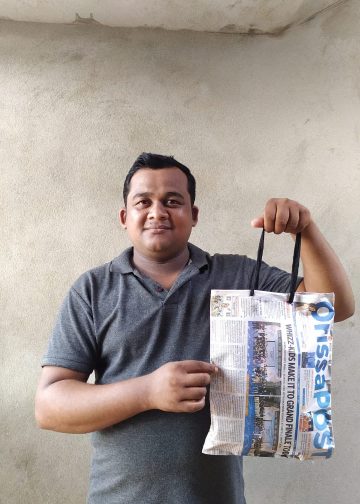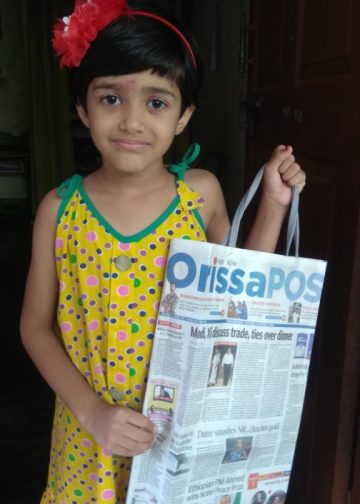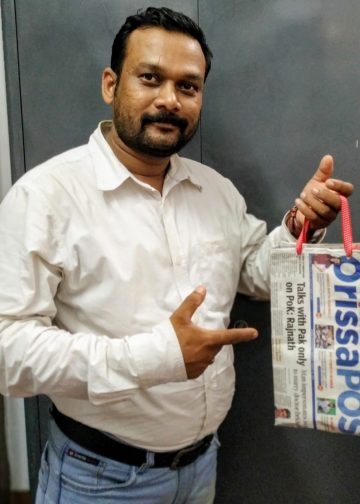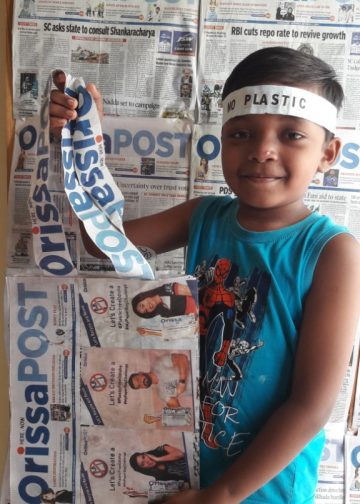Rashmi Rekha Das
Ceremonial wedding galas featuring lacquer dolls are an inextricable feature of the folk culture of Balasore district. With plastic and ceramic toys flooding the markets, however, lacquer artisans are bending over backwards to make ends meet
“Aa Baula Bohu Bohuka Khela Kheliba,
Jhia bahakari pua bahakari
jani-jautuka deba”
(Come friends, let’s play doll marriage, with the neatly decked up bride and groom. We will have fun and joy, giving dowry and gifts)
This popular ditty is based on a unique aspect of the folk culture and tradition of Balasore known as ‘jaukandhei bahaghara’. ‘Jau’ means lacquer, and bangles, ornaments, bamboo boxes, wooden crafts, terracotta and dolls decorated with lacquer mixed with different attractive hues are the creative products of local craftsmen. Dolls made of lacquer are known as ‘jaukandhei’ and the marriage between a pair of lacquer dolls is called ‘jaukandhei bahaghara’. It’s an Indian wedding in every sense, and while symbolic, the marriage of lacquer dolls is unique in many ways. Amid the chanting of mantras and exchange of garlands, the ceremony is held with pomp and gaiety.
Dolls made of fired clay, painted with colourful lacquer and artistically designed with lacquer thread are ideal for the wedding ceremony which is an inalienable feature of the folk culture of the region. Nowadays that tradition is on the verge of extinction, thanks to the invasion of pseudo-western cultural mores that have today’s generation in thrall. Once a great source of rural entertainment, the declining folk tradition has thrown hundreds of doll makers into financial misery.
According to historical sources, lacquer doll making in Balasore began around the early part of the 17th century, with the increasing spread of maritime trade and commerce in Utkal, as Orissa was then known. Lacquer and other resin products that originate in the forests were available in abundance in the nearby forests, including Nilagiri and Sajanagarh and the forests in Mayurbhanj district. Rice, precious textile items, leather, horn, lacquer and other forest products were exported in huge quantities from ports in Balasore. With the onset of modern technology and rising popularity of plastic dolls and ceramic items after the 1980s, lacquer doll making entered a phase of steady decline. Families of craftsmen started shifting occupations with the threat of poverty and deprivation looming large. Moreover, most of the artisans were unable to use modern technology to upgrade lacquer-based crafts and develop designs in accordance with contemporary trends. Even in this fiercely competitive world where the traditional arts and crafts are gasping for breath, a man named Keshu Das is determined to revive the folk tradition of ceremonial dolls’ weddings.
Das believes the languishing arts and crafts of Balasore need revival and promotion. His efforts to organise art lovers resulted in the formation of the Balesori Kala Kendra, a cultural organisation, in 2005. According to the cartoonist-cum-art aficionado, lacquer art is inextricably linked with Indian tradition, folk culture and rituals since the ancient age. The poems of Kalidasa, who lived during the reign of King Vikramaditya, mention the use of lacquer-based cosmetics used for embellishing a woman’s lips and feet, commonly known as ‘alta’.
“‘Jaukandhei’ is an old art form with its origins in Balasore which has gradually declined in the age of the toy industry. Till the late 1970s and early 80s, lacquer toys were sold at fairs and festivals across the state. Thanks to the increasing influx of plastic and ceramic toys that crowd the markets today, lacquer artisans have been hit hard,” says Das.
“Residents of Barabati, Patrapada and Sunahat first began solemnising doll marriage and the ceremony was organised to bring conjugal peace in the family. The economically well-off would arrange palanquins to carry the bride and groom and this cultural practice was prevalent in Sunhat, Patrapara, Mansing Bazzar, Makalpur, Puruna Balesore, Ranasahi, Tapsi, Rasalpur and many other parts of the district. With this traditional practice fast disappearing over the decades, ‘jaukandhei’ survives today in the form of the ‘jagatpedi’ offered to the bride during the ceremony. The word is a mixture of ‘jagat’, meaning universe, and ‘pedi’, meaning a box. It is a very large box made of bamboo containing clothes, groceries, ornaments, cosmetics and other items required to meet the day-to-day needs of the bride for a long period after marriage.
At a time when child marriage was prevalent, lacquer dolls were gifted to the little brides at the time of marriage who knew little or nothing about the sacred act of tying the knot. Such gifts instilled in them the idea of the social union called marriage and the importance of maintaining a happy conjugal life. Besides, the auspicious occasion of Maha Sabitri Brata offered lacquer artists of Balasore and Rayagada the chance to sell their crafts and other toys. Lac dolls and bangles were offered to Goddess Lakshmi and Lord Narayan by married women, but this practice is rarely witnessed these days. Moreover, it was believed that organising the ceremony was necessary to thwart untoward happenings during the marriage of children.

Das says that the Dutta, Sena, Chanda and Nandi families, belonging to the Shankhari and Jaura communities of Balasore, introduced lacquer bangles and fired clay dolls designed with coloured lacquer. The Nandi family is still engaged in the doll making business. “The process of doll making is not centered on the individual craftsman. Both women and men have roles to play. Due to lack of interest among women craftsmen, the number of artisans has steadily declined over the years. No entrepreneur is coming forward to carry the legacy,” laments Das who started organising marriage ceremonies at Nua Bazaar, Kuruda and Soro in 2011 after forming another committee called ‘Jaukandhei Bahaghara Utsav Committee’. Das conducts workshops and seminars to create awareness about lacquer dolls and their place in popular culture.
“While Nabarangur has around 30 lac artists today, Cuttack and Balasore districts have 20 each,” Das regrets, adding that earlier people organised the elaborate ceremony during summer, especially after Mahabishuba Sankranti. “Nowadays we have come up with specific dates for the ring ceremony and other activities associated with the marriage. On the occasion of Holi, we usually christen the brides and grooms. This year, the bride is Tapoi and the groom Sumant. Earlier, the artists collected lacquer from the forests for their products. Today they mostly depend on Kolkata for lacquer despite the availability of raw materials,” says Das.
According to Ranjan Kumar Kar, a scientist with OUAT, “Once upon a time Orissa was a major producer of lac, thanks to its vast forest cover and the suitable climate and lifestyle of forest dwellers. Strangely, despite the availability of large resources in terms of host trees, lac production remains limited.”
Different suggestions have been offered by Das and Kar with a view to reviving the declining doll making business. First, the languishing traditional folk craft could be revitalised through government intervention for wide research and development including design development, product development, quality control and marketing mechanism. Second, lacquer artisans need enough support to strengthen their own organisations. They should be equipped with know-how to use modern technology in lacquer craft and other allied cottage industries. Thirdly, skills training on product improvement, salesmanship, entrepreneurship development, accounting, stores management, packaging, branding, patenting and licensing of products is essential. And finally, participation in different national and international exhibitions and fairs is necessary for craftsmen to showcase their creations.
Panchanan Samal, principal of Dhauli Art and Crafts College, says, “The organisation Ekatra Balasore spearheaded by Kesu Das holds such ceremonies every year in Bhubaneswar. Last year, we organised a marriage ceremony for the first time at Ekamra Haat, June 7. It witnessed a unique procession which started from Sriya Square and culminated at Ekamra Haat. It was accompanied by a musical band and fireworks and people danced and made merry to their hearts’ content. Parikshit, the handsome bridegroom, was carried on a palanquin surrounded by friends. The procession reached Ekamra Haat where his beautiful bride, Padmamali, coyly waited with her father and other family members.”
Artisan Tapan Nandi, son of the famous lac artiste the late Sabitri Nandi, says, “I am into the business for the last 30 years and employ 20 artisans. They don’t have equal wages, as making lacquer products is not everybody’s forte. In Orissa, there are not many takers for such products compared to Delhi and Maharashtra. More than dolls, bangles and other decorative items made of lacquer are in demand.”






